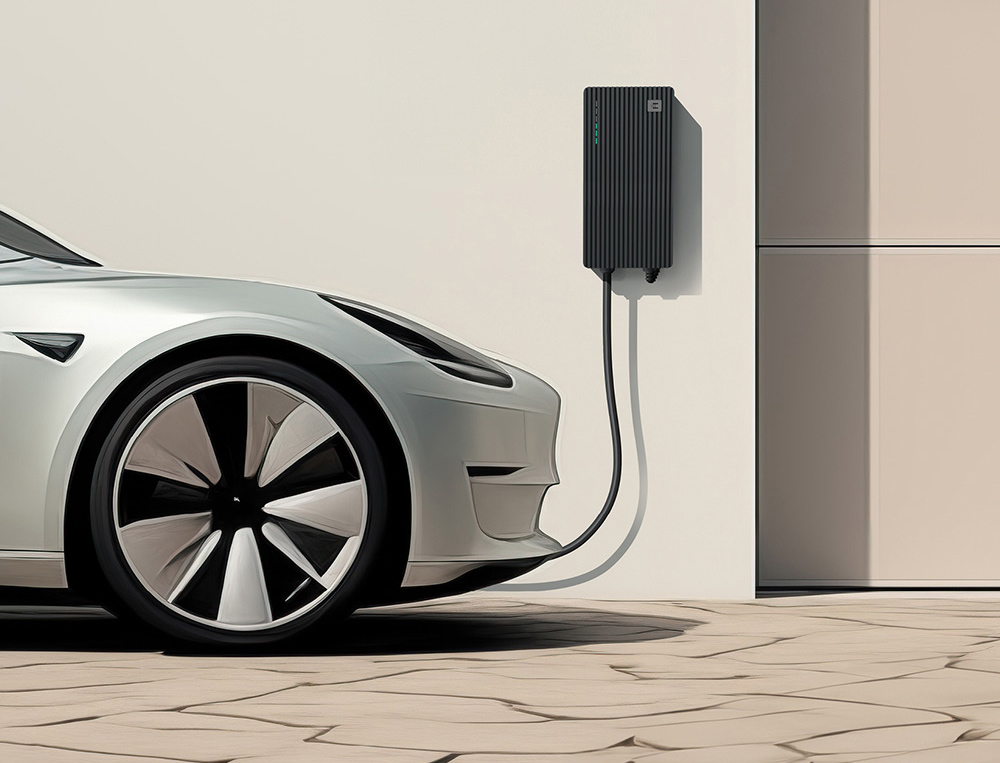
NORTH & SOUTH + WE EV

Powering ahead
The case for home charging makes life simpler.
These days, to say that Electric Vehicles (EVs) are rising in popularity is perhaps putting it a little lightly. The total number of plug-in vehicles registered in NZ has increased nearly threefold since 2021, a change accompanied by a compounding decline in petrol vehicles. These changes are a sign that Aotearoa is moving towards a greener future with reduced harmful emissions. However – in the famous words of American glam metal band Poison – ‘every rose has its thorn’, and the growing EV fleet in NZ is no exception.
Naturally, as more advanced models are introduced to New Zealand roads in greater numbers, the load on our existing electrical network also increases; heightening existing concerns around the long term capacity of our electrical infrastructure. In fact, analysis from WEL networks indicates that without effective solutions, New Zealand could be staring down the barrel of doubling existing investment in our electricity network over a 15 year period. The cost of which will filter down to consumers in the form of increased line charges. And with over 80 per cent of EV charging done from home, there is a clear need for innovative solutions.
The total number of plug-in vehicles registered in NZ has increased nearly threefold since 2021, a change accompanied by a compounding decline in petrol vehicles.
Which is exactly what ‘We.EV’, WEL Network’s infrastructure initiative, has set out to achieve. Available for homes and workplaces, their chargers are designed to not only save time and money but also help alleviate some of this growing pressure on our electrical network by regulating its load more effectively. In the words of We.EV Product Manager Sam Montgomerie, “there’s plenty of supply to go around, it’s just about smartly managing it.”
But how exactly can a solution so simple hope to have an impact so large? The answer lies in the intelligent software built into We.EV’s chargers. According to Montgomerie “the chargers respond to the electricity grid and when there is restricted supply, they automatically throttle down in speed” When expanded over a large scale, a network of these chargers would help in preventing overloads to the entire electrical system.
But installing a We.EV charger is not simply an act of social service. It also comes with a wide array of personal benefits as well. The same throttling capabilities that help protect the electrical network also allow We.EV chargers to automatically regulate their output during times of heavy household usage, preventing the risk of overloading your circuit. They also allow you to charge up to 5 times faster than a traditional three pin charger, unlocking the ability to fully charge your vehicle overnight. Not to mention the accompanying app, which gives you access to monitoring software as well as allowing you to efficiently schedule charging during periods of lower cost.
So whether the motivations for installing a We.EV charger are socially driven or personal, it would seem to make little difference, and therein lies the true value of this initiative. When someone instals a We.EV charger, everyone’s a winner. From themselves, to the manufacturers, and even their neighbours down the street; everyone takes another small step forward towards Aotearoa’s electric future.
